Up for test is the Hybrid Audio L1 Pro R2 Ring Radiator Tweeter.
Information from the manufacturer can be found here: http://store.12velectronics.com/legatia-l1-pro-r2-tweeters-black/


Small Signal Parameters and Impedance
Results as measured via Dayton’s DATs measurement tool. Which is a very little handy tool to have. 😉
- f(s)= 639.90 Hz
- R(e)= 3.48 Ohms
- Z(max)= 6.84 Ohms
- Q(ms)= 1.641
- Q(es)= 1.702
- Q(ts)= 0.835
- L(e)= 0.48 mH
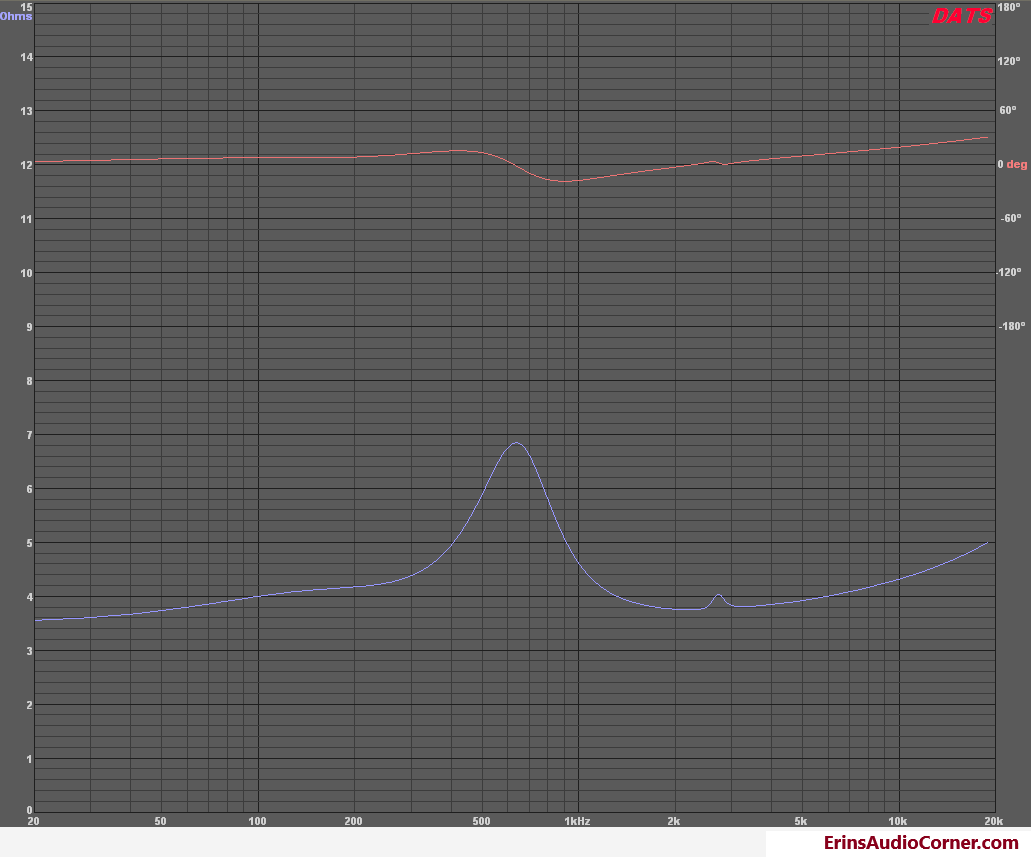
Frequency Response
Frequency Response and the following Harmonic Distortion measurements were taken using Dayton’s OmniMic measurement system.
The frequency response measurements below are on-axis (0 degrees) and off-axis (15, 30, 60 degrees), measured at 2.83v/1m.
- Black = 0 degrees
- Blue = 15
- Red = 30
- Green = 60
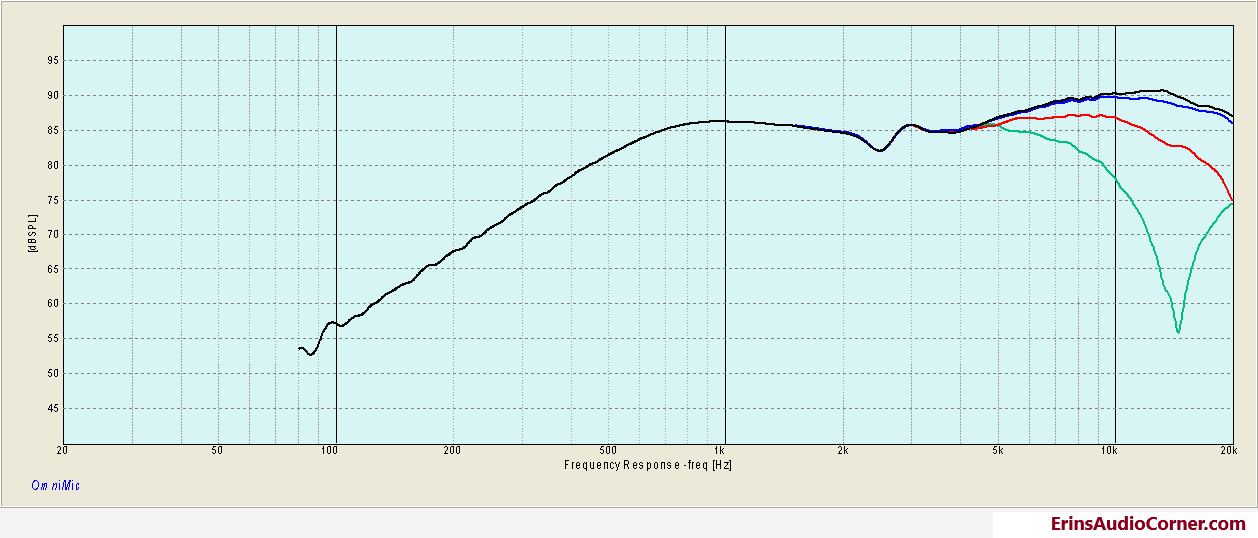
To get an idea of the off-axis response vs the on-axis (0 degrees) response, I normalized the above. What you get is the relative output level of each axis vs the on-axis level.
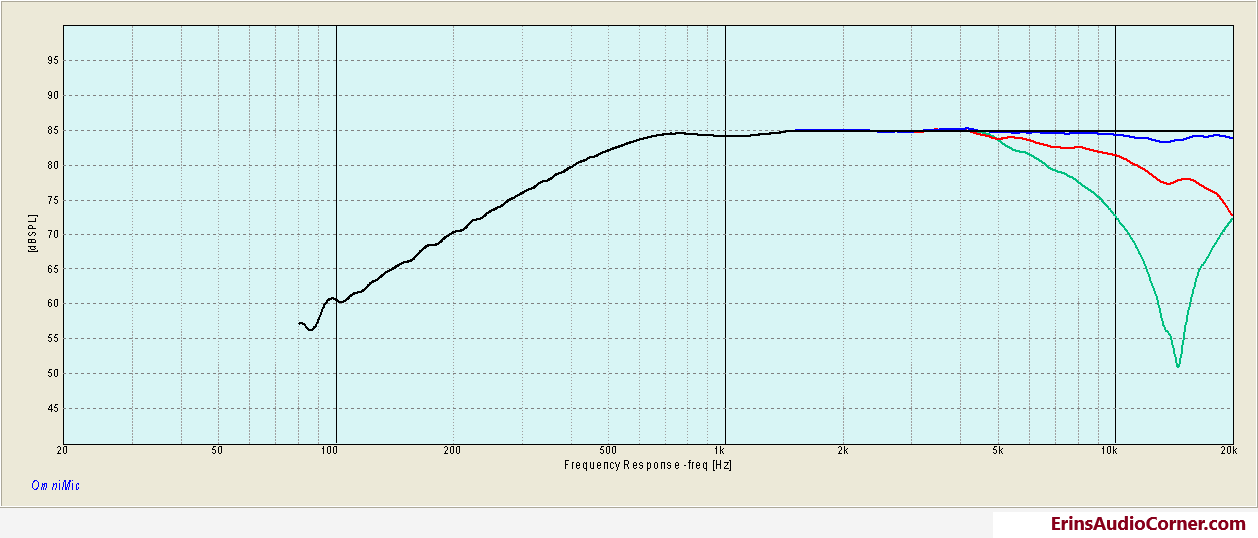
Harmonic Distortion Testing
Legend:
- Maroon – Fundamental
- Blue – THD
- Red – 2nd Order Distortion
- Pink – 3rd Order Distortion
- Green – 4th order
- Teal – 5th order
Testing done in the nearfield to emulate 90dB and 96dB output at 1 meter.
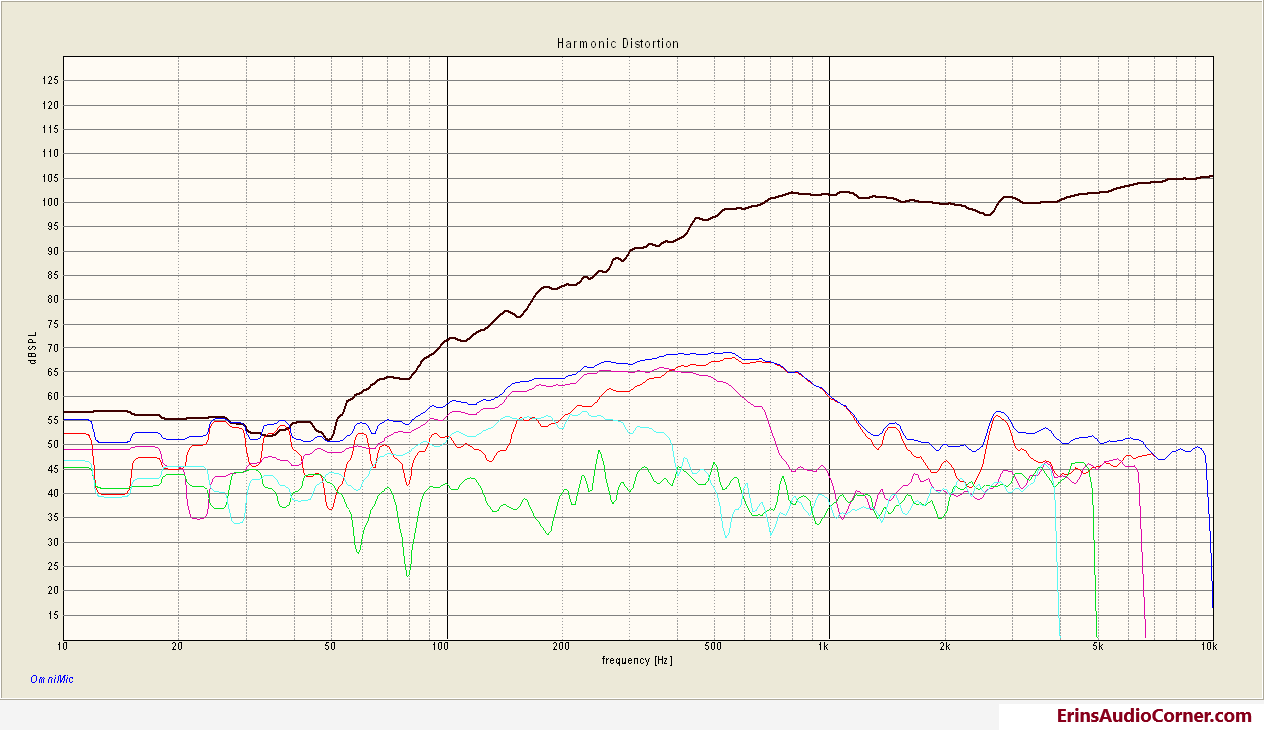
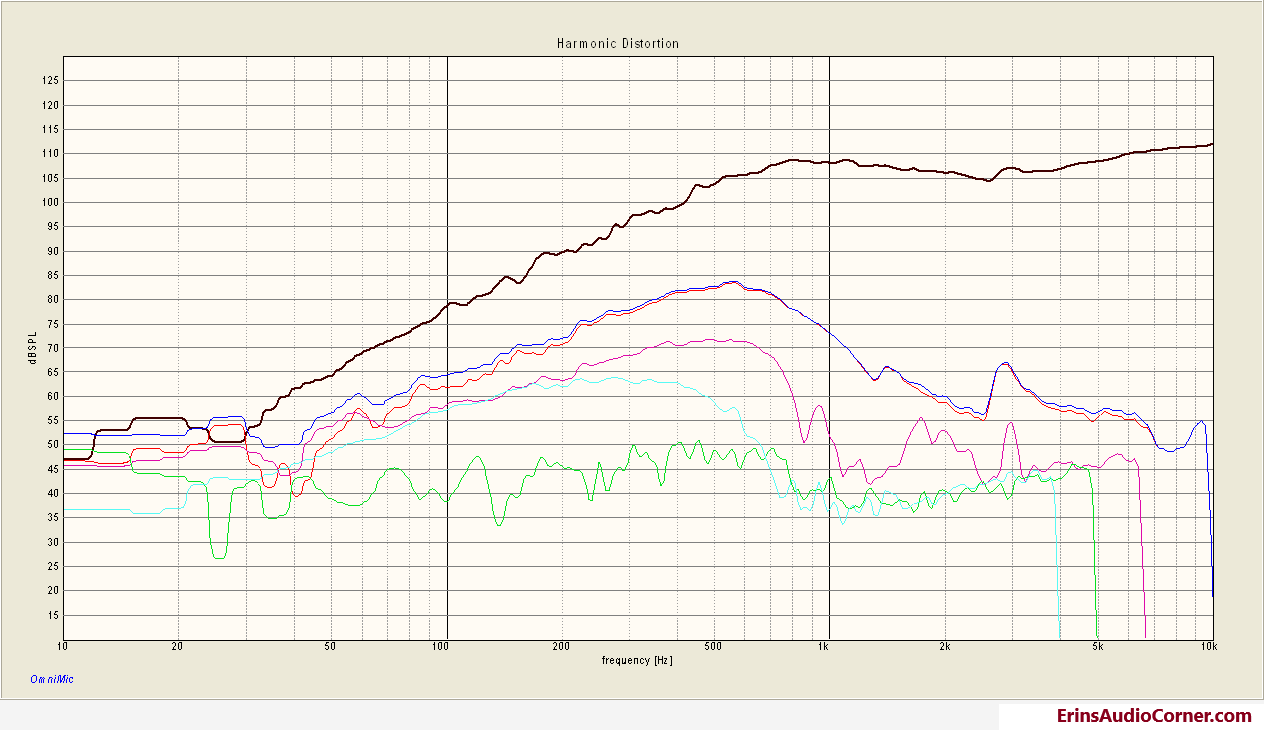
Impressions/Results
The Fs is measured at approximately 640hz. To get an idea of what this means on the high-pass crossover, let’s evaluate the HD results. At 96dB output the THD (blue) is 1.70% at 1khz. The THD is less than 0.50% down to 1.8khz though there is a peak in THD of about 1.0% THD at 2.8kHz, which corresponds with the dip/peak shown in this region on the frequency response as well as a bump in the impedance at this same point, which means this could possibly be a chamber resonance.
Measured sensitivity is right around 86-87dB on average (note the rising response above 4kHz). The response isn’t flat; it has approximately a 5dB rising response above 4khz, but this response is smooth. There is a 3dB dip (noted above) at approximately 2.4khz trending back up to a 1dB peak at 3.2kHz which correlates to a resonance in the impedance data. Given this is a area is largely comprised of a dip, though, the concern isn’t great. At 30 degrees off-axis, the response is down approximately 4dB at 10khz. At 60 degrees off-axis, the response is down approximately 7.5dB at 10khz. Overall, the on and off-axis response looks quite good up to 10khz where the 60 degree measurement shows a strong dip centered at ~14.4kHz. This dip doesn’t really concern me because it’s a dip, not a peak, and doesn’t show up in the other axes of measure which indicates this is not a modal issue; rather just a reflection (possibly a reflection off the surround). While not ideal, I don’t consider it a deal-breaker.
Bottom line: Really nice polar response. Good use down to 2khz with a steep crossover. Though, with the resonance at 2.4khz, I’d think 2.5khz with a 24dB electronic crossover would be a better use for these in a higher output system. Obviously individual needs/results may vary.
End
Or if you just like what you see here and want to help me keep it going, there’s a Paypal Contribute button at the bottom of each page. Just provide what you can. Every little bit is truly appreciated.
You can also join my Facebook and YouTube pages via the links at the bottom of the page if you’d like to follow along with updates.
Thanks!

